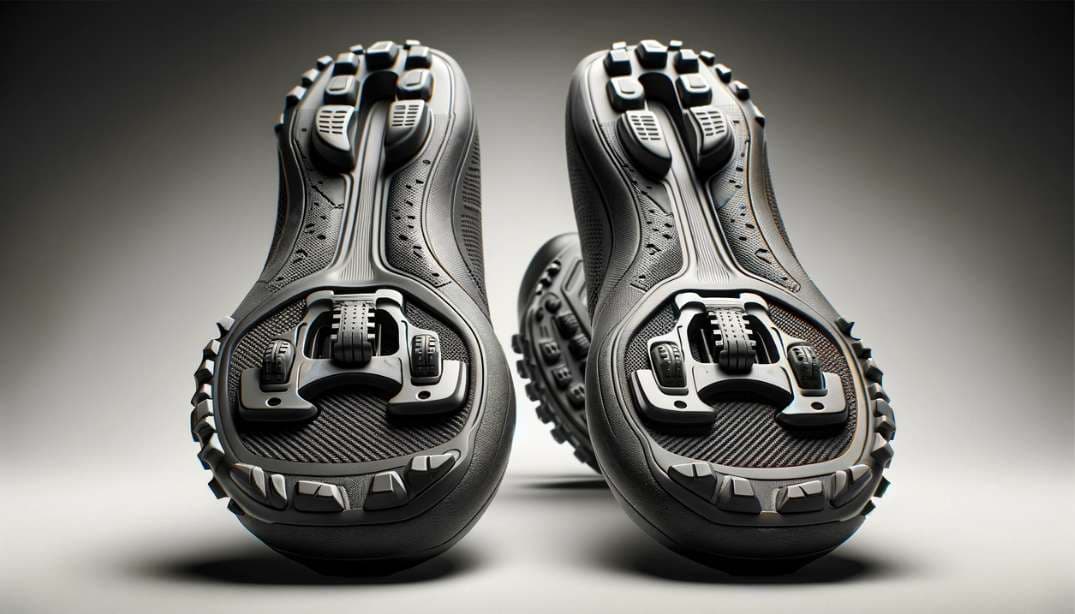
Understanding the Impact of Riding Style on Road Bike Fit
Aligning Cleats for Optimal Road Bike Fit
Key Takeaways
| Aspect | Details |
|---|---|
| Importance of Cleat Alignment | Crucial for comfort, efficiency, and injury prevention in road biking |
| Tools and Techniques | Overview of methods and tools for proper cleat alignment |
| Common Mistakes | Identifying and avoiding typical alignment errors |
| BikeFittr's Role | How BikeFittr.com aids in achieving the perfect cleat alignment |
Road biking, a blend of speed, endurance, and agility, demands not just physical prowess but also meticulous attention to equipment setup. Among these, cleat alignment is a pivotal aspect of a road bike fit. Proper alignment ensures a seamless connection between the cyclist and the bike, enhancing both performance and comfort.
Understanding the Basics of Cleat Alignment
Cleat alignment is the process of adjusting the position of the cleats (the part of the bike shoe that attaches to the pedal) to match the cyclist's natural foot position and pedaling style. This alignment is essential for:
- Efficiency: Maximizing power transfer from legs to pedals.
- Comfort: Reducing strain on knees and ankles.
- Injury Prevention: Minimizing the risk of repetitive strain injuries.
For detailed insights on the fundamentals of road bike fitting, check out our comprehensive guide on road bike fit measurements.
Tools for Cleat Alignment
Achieving the perfect cleat position requires specific tools and a bit of know-how. Here are some essentials:
- Cleat fitting tool: A device specifically designed for adjusting cleat angles and positions.
- Goniometer: Helps in measuring joint angles, particularly useful for assessing knee alignment.
- Plumb line: Aids in aligning the cleat fore-aft position relative to the knee and pedal axle.
For beginners in road biking, our road bike fitting guide for beginners provides valuable tips and tricks to get started with the right fit.
Step-by-Step Guide to Cleat Alignment
- Initial Placement: Start with cleats positioned centrally on the shoes.
- Adjustment for Foot Angle: Align cleats to match the natural angle of your feet while pedaling.
- Fore-Aft Positioning: Adjust cleats forward or backward to align the ball of the foot over the pedal axle.
- Fine-Tuning: Make small adjustments and test-ride to find the most comfortable position.
Common Mistakes in Cleat Alignment and How to Avoid Them
Cleat alignment, while seemingly straightforward, can be riddled with errors if not done carefully. Here are some common pitfalls:
- Overlooking Foot Varus/Valgus: Ignoring the natural tilt (inward or outward) of your feet can lead to discomfort and inefficiency.
- Ignoring Leg Length Discrepancy: Failing to account for differences in leg length can result in imbalanced pedaling.
For a deeper understanding of how cleat alignment affects different riding styles, explore our guide on riding style and road bike fit.
The Role of BikeFittr in Cleat Alignment
BikeFittr.com elevates the process of cleat alignment with its AI-driven approach. By analyzing your riding posture and preferences, BikeFittr offers personalized recommendations for cleat positioning, ensuring a fit that's tailored to your unique needs. This technology is especially beneficial for:
- Racing Enthusiasts: Achieving an aggressive yet comfortable position for high performance, detailed in our road bike fit for racing guide.
- Long-Distance Riders: Ensuring comfort over prolonged periods, as discussed in road bike fit for long distance.
Integrating Cleat Alignment with Overall Bike Fit
Cleat alignment doesn't exist in isolation; it's part of a larger puzzle of bike fitting. Aligning your cleats optimally complements other aspects of bike fitting such as:
- Saddle Selection: The right saddle choice, in conjunction with proper cleat alignment, can significantly boost comfort and efficiency. Learn more about this in our saddle selection guide for road bike fit.
- Handlebar Positioning: The interplay between cleat position and handlebar setup impacts aerodynamics and comfort, detailed in our handlebar position guide for road bikes.
Balancing Comfort and Speed
The ultimate goal of cleat alignment, in sync with overall bike fitting, is to strike a balance between comfort and speed. This involves:
- Personalized Fit: Every cyclist's body is unique, demanding a customized approach to bike fitting.
- Adaptability: Adjusting the fit based on changing needs and riding conditions.
For insights into achieving this balance, refer to our article on balancing comfort and speed in road bike fit.
Special Considerations for Women in Road Bike Fitting
Women cyclists often face unique challenges in bike fitting, primarily due to differences in anatomy and riding style. Key areas of focus include:
- Narrower Stance Width: Adjusting cleat position for a narrower pelvis.
- Saddle Choice: Women-specific saddles can greatly enhance comfort, particularly in conjunction with proper cleat alignment.
For a comprehensive guide tailored to women cyclists, visit road bike fit for women.
How BikeFittr Helps Various Types of Riders
BikeFittr's AI-powered platform is versatile, catering to a broad spectrum of riders, from beginners to professionals. It simplifies complex fitting processes, including cleat alignment, by providing:
- Customized Recommendations: Based on individual riding style, physique, and goals.
- Real-Time Feedback: Offering immediate suggestions for adjustments.
Whether you are new to the sport or looking to refine your setup, BikeFittr is your go-to resource. Check out the cleat alignment guide for road bike fit on BikeFittr.com for more information.
Wrapping Up: The Importance of Cleat Alignment in Road Bike Fit
In conclusion, aligning cleats correctly is a crucial step in achieving the optimal road bike fit. It enhances riding comfort, improves efficiency, and helps prevent injuries. Remember, bike fitting, including cleat alignment, is an ongoing process. Regular adjustments and checks are essential to maintain the perfect fit, especially as your riding style and conditions change.
For those just starting out, our road bike fitting guide for beginners offers a solid foundation to begin your fitting journey.